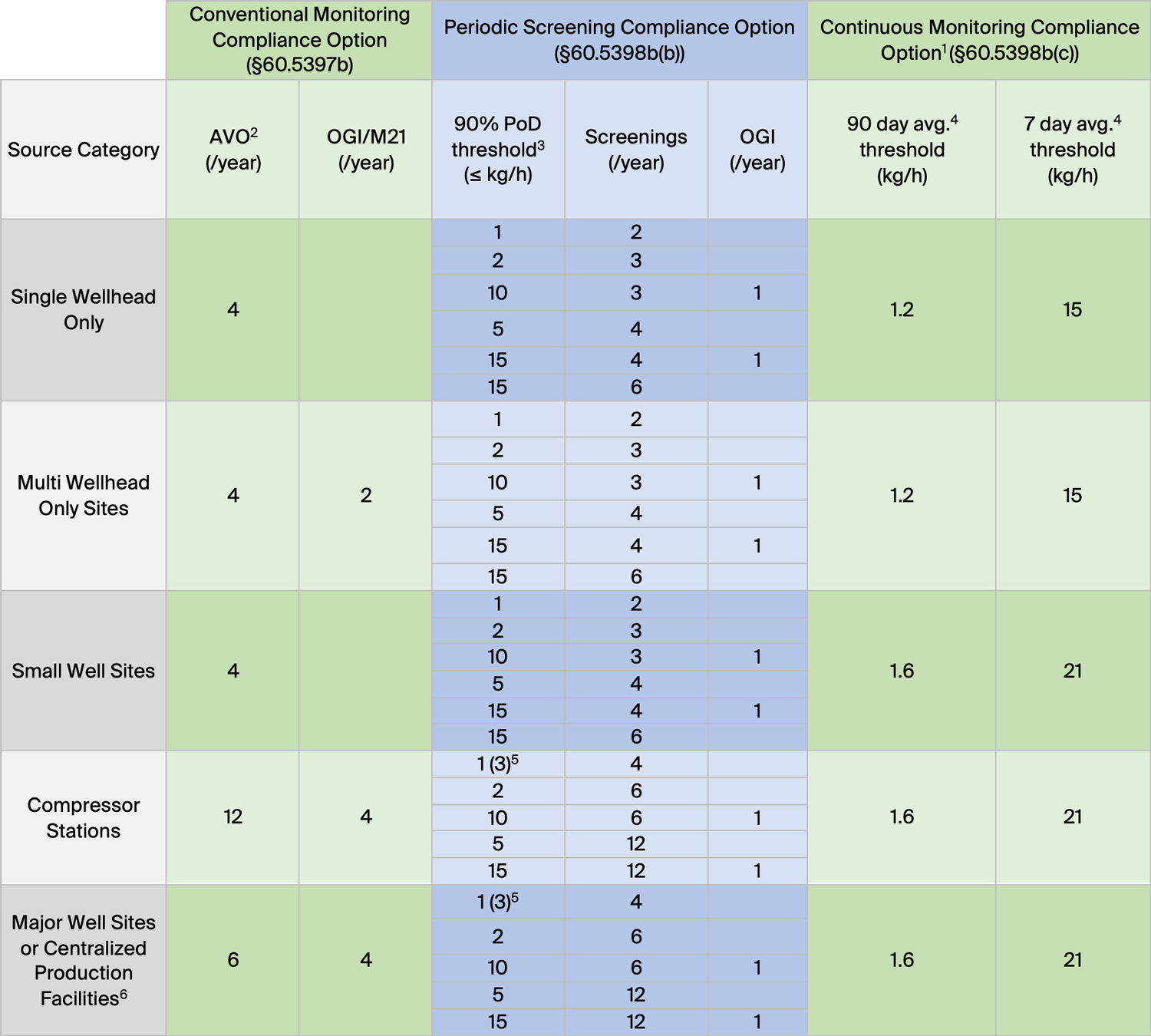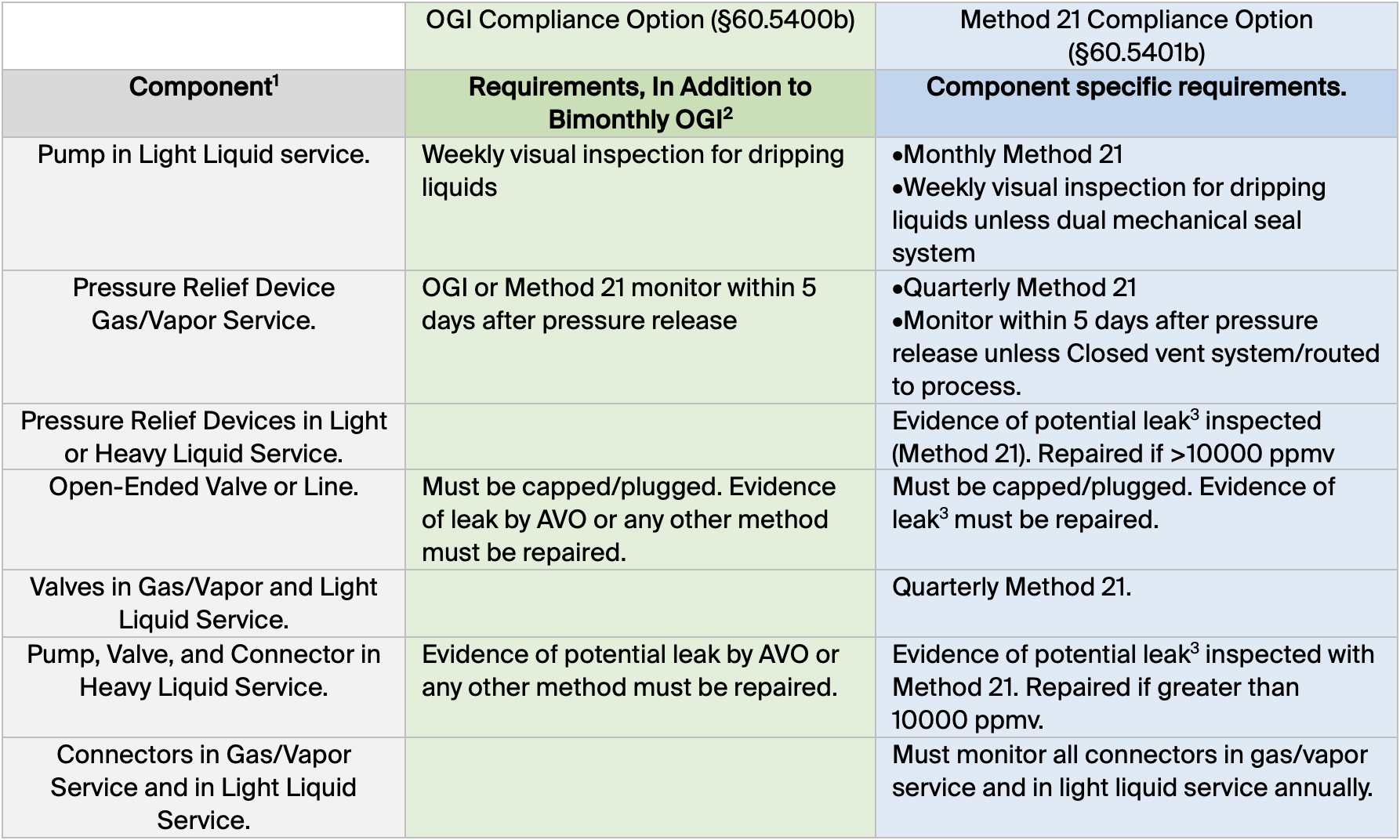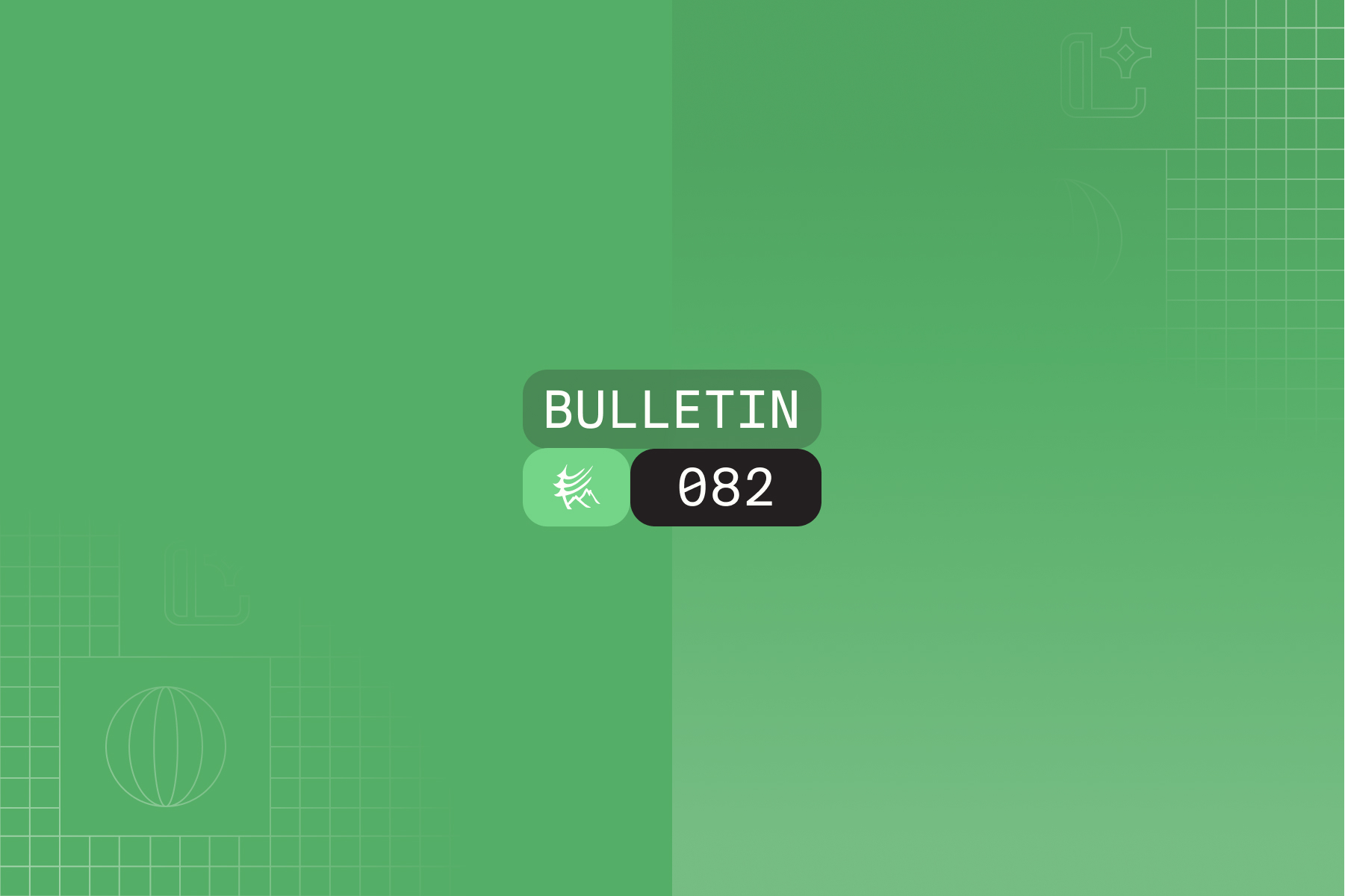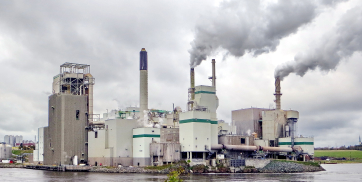On December 2nd, EPA released the final form of the highly anticipated final methane rules, OOOOb and OOOOc, regulating emissions from oil and natural gas operations. Here, we focus on OOOOb’s finalized emission monitoring requirements and how alternative/advanced technologies can be used for various compliance pathways. This is part two of a two-part series. In part one, we focused on the pending Super Emitter Response Program, including how it will impact emissions inventory reporting.
Fugitive emissions monitoring and use of advanced technologies
Within OOOOb, the phrase “alternative test method” (§60.5398b(d)) describes the combination of an advanced methane detection technology and work practice; this applies to modern periodic screening technologies and continuous monitor solutions (CMS). EPA provides streamlined (§60.5398b) and non-prescriptive (§60.5399b) pathways for advanced technology approval. Within the prescriptive section (§60.5398b), periodic screening frequency requirements are based on the technology’s Minimum Detection Level (MDL) for methane, between 1 and 15 kg/h (OOOOb, tables 1, 2). The prescriptive section (§60.5398b) also provides CMS options—action is required when the rolling average methane emission rate (90-days or 7-days) exceeds specific thresholds over the site-specific baseline. Additionally, the baseline must be periodically updated.
Regarding periodic screening program design, OOOOb permits significant flexibility:
- Multiple technologies may be combined into an alternative screening program, with screening frequencies based on the least sensitive technology.
- Any alternative screening method may at any point be substituted with an OGI survey, but if an OGI survey is required, it may not be substituted with another technology.
- CMS technology can be used for periodic screening if it meets periodic screening MDL requirements. Technology not meeting CMS requirements can potentially be used in this way.
- Follow-up survey requirements are based on spatial resolution of the screening technology.
Whereas CMS systems require:
- MDL < 0.4 kg/h methane.
- Methane measurement at least every 12 hours.
- Data transmission at least every 24 hours.
- Operational downtime < 10%.
- Monitoring of system health.
For the reader’s convenience, we have compiled multiple sections of OOOOb into a novel equivalency matrix (below). This details the three prescribed pathways to emissions compliance for each specific source of fugitives. However, operators may still propose customized programs through an alternative means of emission limitation application (§60.5399b), which is modelled or otherwise shown to achieve equivalent emissions to the prescribed protocols below.
Highwood’s Alternative Test Method Equivalency Matrix.

1 Requires 0.4 kg/h MDL. May be used as a screening technology.
2 May use any other method.
3 Minimum Detection Level (MDL) for 90% Probability of Detection (PoD) at that threshold.
4 Above site baseline.
5 To incentivize use of advanced technology while providing “adequate time to develop data that push the detection thresholds down to the lowest levels of the proposed periodic screening matrix”, an interim periodic option is provided. For two years, operators can use advanced technology with an MDL of ≤ 3 kg/hr for quarterly OGI monitoring equivalencies.
6 Containing 1 or more major production and processing equipment: Storage Vessels/Tank Batteries, Control Devices, Gas driven controllers or pumps, or two or more major pieces of equipment not specified.
OOOOb further prescribes specific operational and inspection requirements for covers, closed vent systems (§60.5411b, §60.5416b), and control devices (§60.5412b, §60.5417b). These are required in addition to fugitive emissions monitoring requirements (§60.5397b) and/or its alternatives (§60.5398b, §60.5399b) detailed above.
Gas Plants Addressed in Separate Sections
Gas processing plants have 3 compliance pathways: In the first, bimonthly OGI monitoring is required for every piece of equipment following Appendix K guidelines1, and all observed emissions must be repaired. In addition, this compliance option has some additional equipment specific requirements (§60.5400b). The second compliance pathway, using Method 21, has varying component specific inspection requirements (§60.5401b); we detail pathways 1 and 2 in the table below. The third compliance pathway is non-prescriptive and based on showing equivalent emission reductions, such as through modelling (§60.5399b).
Gas Processing Plants Monitoring Requirements

1 All equipment is assumed to have the potential for methane and/or VOC emissions, unless shown otherwise by the operator.
2 All equipment must be inspected by OGI bimonthly.
3 “Evidence by AVO or any other method”.
Advanced Technology Approval
EPA is providing a streamlined online application process for alternative test methods meeting Super Emitter, Periodic Screening, and/or Continuous Monitoring requirements, anticipated to be ready 60 days after OOOOb is entered into the Federal Register. This application critically requires independently evaluated documentation (reports/scientific papers) establishing performance metrics. The application further requires rigorous engineering details, scientific theory, analytic/data methods, procedures/specifications, and spatial resolution justification. Periodic screening spatial resolution can be site, equipment, or component, which determines the required follow up inspection radius. Although any information submitted to the EPA’s application portal may be made publicly available, confidential business information relevant to the application can be submitted separately. OOOOb does not specify how quickly an application could be processed, but it does establish an upper bound of 360 days for processing of a complete application; if a complete application is not approved or rejected within that period, the alternative test method is considered temporarily approved.
Applicability
40 CFR 60 subparts New Source Performance Standards (NSPS) OOOOb and Emissions Guidelines (EG) OOOOc) use December 6th, 2022 as a cutoff. Sources which commenced construction, modification, or reconstruction after this date are subject to the methane and VOC emissions standards of OOOOb, and prior to this date are subject to OOOOc. Within these rules, criteria/thresholds for modification and reconstruction are rigorously defined. Although the methane standards are extremely similar between OOOOb and OOOOc, OOOOb has additional regulations regarding VOCs which are not addressed in OOOOc. Subparts KKK, OOOO, and OOOOa remain in effect for the interim; however, they will be displaced by OOOOc or its state-specific equivalent when fully in force, up to ~5 years from now.






